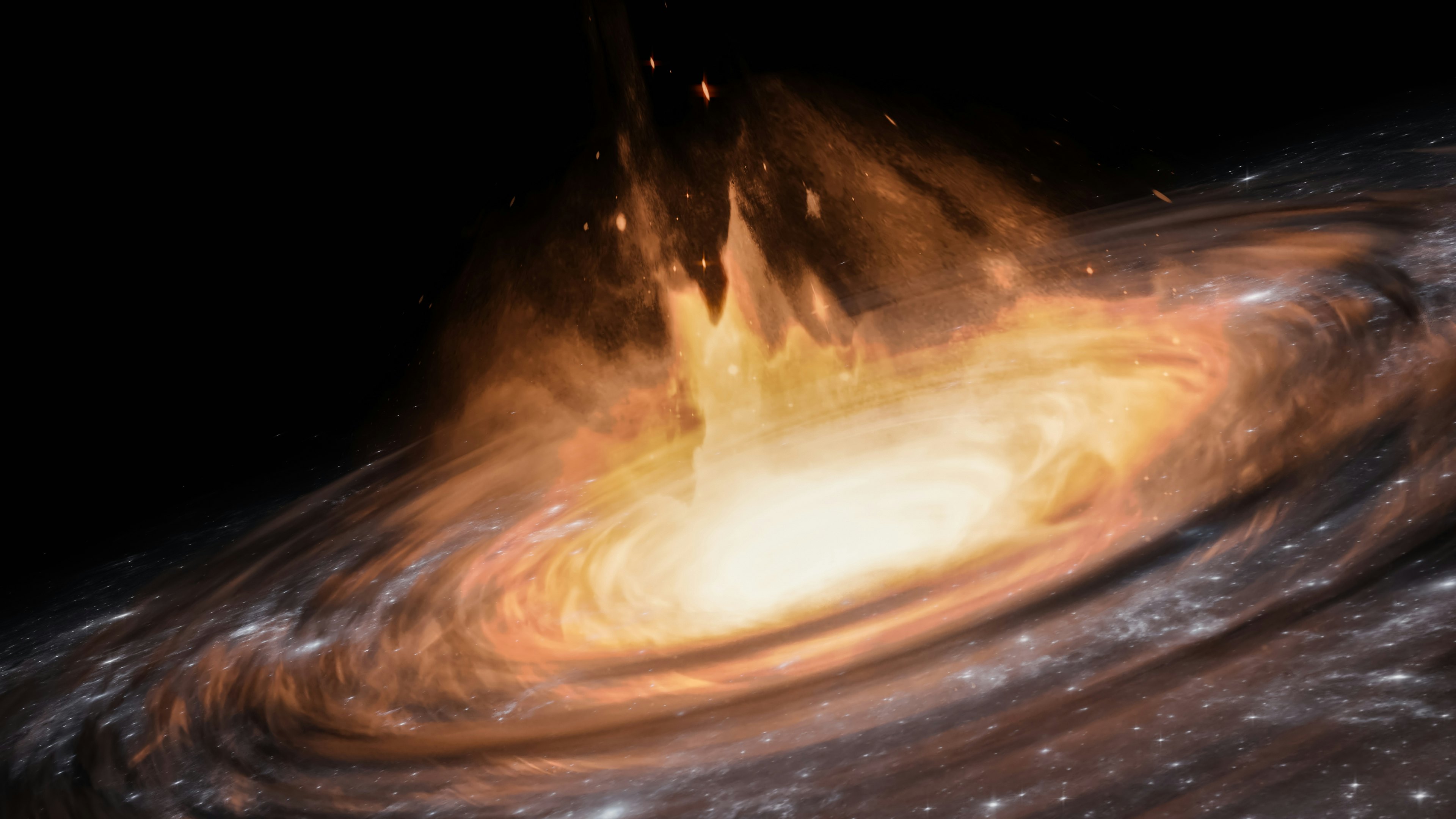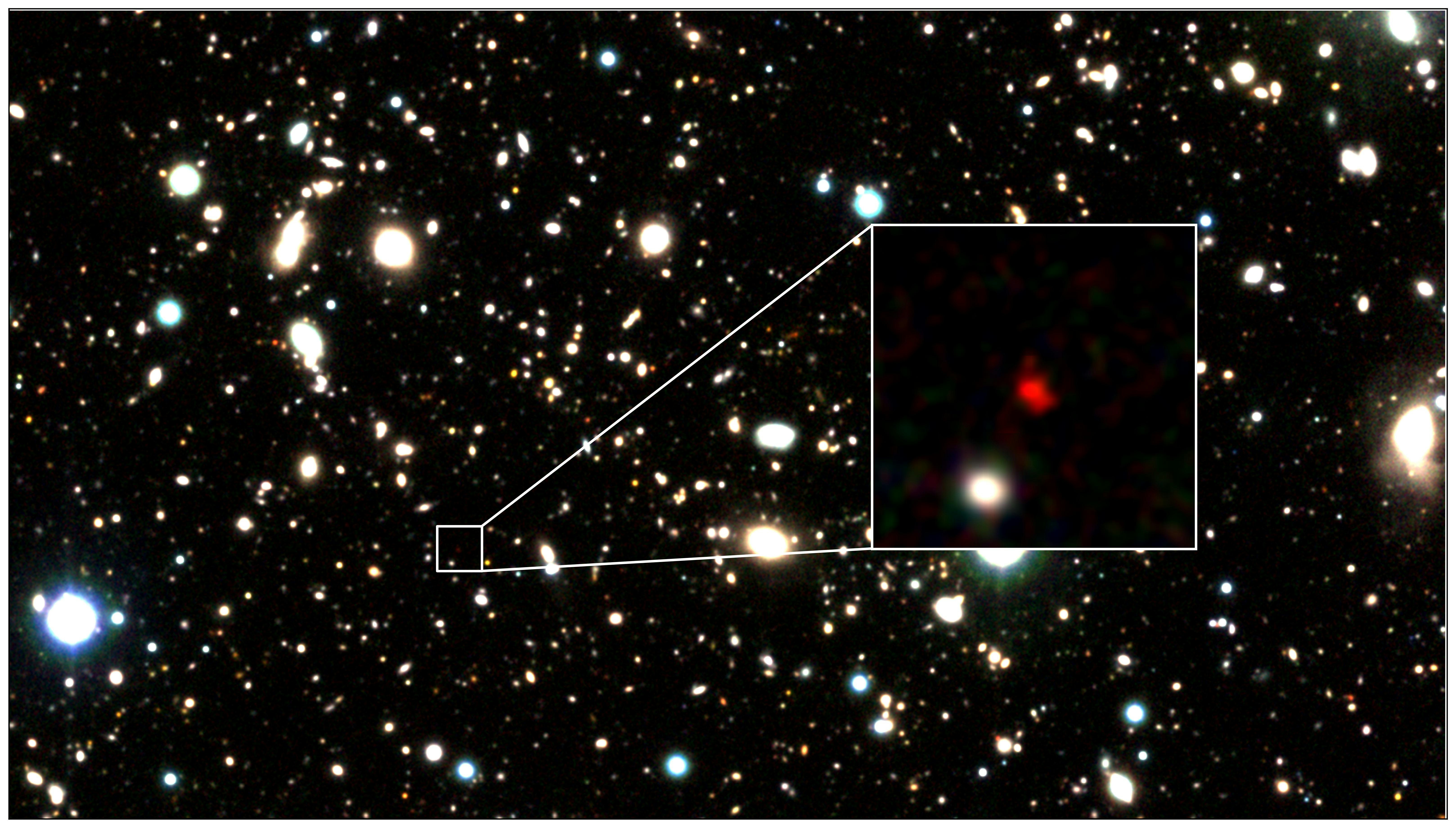
Even to a telescope as powerful as the Subaru Telescope, HD1 is just a speck of light — a tiny mote that, if it is what we think it is, could revolutionize our understanding of the universe.
The discovery — HD1 is a candidate galaxy — strong evidence shows that it’s more than likely a galaxy. In a pair of papers published Thursday in the Astrophysical Journal and the Monthly Notices of the Royal Astronomical Society Letters, scientists say this candidate galaxy may be the most distant astronomical object we have ever seen.
HD1 is so distant, in fact, that it extends all the way back to a time when the universe was less than a billion years old.
The galaxy is strange — for something that is 13.5 billion light-years away, it is brighter than it should be. Yet it could be the key to understanding the early universe, as well as the first stars and first galaxies.
It presents a fresh cosmic mystery for a telescope like the James Webb Space Telescope or the Chandra X-Ray Observatory to solve.
Here’s the background — In 2021, a group of astronomers published a paper on Arxiv.org about a hunt for galaxies at high redshift. High redshift refers to how light appears in the universe — something exhibiting blueshift is coming toward us, while redshift means it is moving away from us. An object with a high redshift is very far away from us.
The researchers identified two galaxy candidates at extremely high redshift, called HD1 and HD2. Finding them took 1,200 hours of observing the sky using four powerful observatories: The Subaru Telescope, VISTA Telescope, UK Infrared Telescope, and Spitzer Space Telescope.
If the distance estimates are correct, then HD1 would be the most distant galaxy ever recorded, and represent one of the first generations of galaxies in the universe. In fact, HD1 and HD2 could be among the galaxies that spewed ionized hydrogen gas into the interstellar medium, leaving space “clear” as we see it today. Before this outpouring of gas, the universe can be thought of as more cloudy and opaque, which would mean, if anybody were alive back then, their backyard telescope would be more or less useless.
What’s new — That Arxiv preprint is now the paper published in Astrophysical Journal today. And in a separate paper, the one in MNRAS, scientists try to determine what HD1 actually looks like.
Study co-author Avi Loeb, a Harvard University astrophysicist, tells Inverse that HD1 appears to be very bright, meaning that it’s likely one of two exceptional possibilities: A small galaxy packed with a population of bright first-generation stars, or a supermassive black hole consuming matter surrounding it.
“If that is a black hole, it’s the earliest we’ve seen,” Loeb says.

How they did it — Loeb and his colleagues analyzed every data point they could get their hands on to do with HD1. They found that HD1 is very bright in the ultraviolet spectrum with a high redshift.
Most galaxies after the birth of the universe were small, compact, dwarf galaxies — a consequence of existing just a few hundred million years after the Big Bang, when the universe was hotter and denser than it is today. These little galaxies were also less bright than galaxies today, with less room for big, luminous stars.
“Because they were such low mass, the effects of stars forming in them could have caused a lot of damage in the sense of pushing gas out of them,” Loeb says.
HD1 and HD2 are at redshift 13, which roughly corresponds to 13.5 billion light-years away or just 300 million years after the universe formed.
“If an object is at a redshift of 13, that means the universe was smaller by a factor of 14 at the time — an order of magnitude smaller,” Loeb says.
That makes the first theory about HD1 incredible, if true. If this galaxy was rife with star formation at a time that kind of activity was supposed to be rare, Loeb suspects we may soon find more like HD1 — forcing astronomers to rethink some of their theories of the early universe.
The supermassive black hole hypothesis is no slouch either. All large galaxies are believed to have supermassive black holes at their center, but how these behemoths form is poorly understood. If HD1 has a supermassive black hole, then it would likely be a quasar — a supermassive black hole at the center of a galaxy rapidly devouring matter around it and then ejecting it out in bright light.
Solving this cosmic mystery is where the big telescopes come in.

What’s next — there are two ways to look at the galaxy candidate that could tell what it is, Loeb says.
One: An X-ray telescope would look at HD1 and determine its energy output. This would tell us about the nature of the object, and confirm if it’s a black hole. Loeb says that both NASA’s Chandra X-ray observatory and the recently-launched Imaging X-ray Polarimetry Explorer would be able to suss out these details.
Two: The James Webb Space Telescope is equipped to stare at the early universe. It might be able to observe HD1 and other high redshift galaxy candidates and get a sense of their spectra. That could give clues as to its structure — if it remains a single point source, it’s very likely a bright quasar instead of a galaxy rife with stars.
Presuming that these observations confirm the supermassive black hole theory, the quasar’s brightness can also tell astronomers a lot about the mass of the black hole. If the star-filled galaxy theory holds up, we can do a similar “weigh-in” and infer the number of stars it would need to hold to emit the light we see today.
Given that Webb is gearing up to reveal the universe in unprecedented ways, it may be taking a closer look at HD1 very soon — and what it reveals could be a major puzzle piece to reveal the true nature of the early universe.







